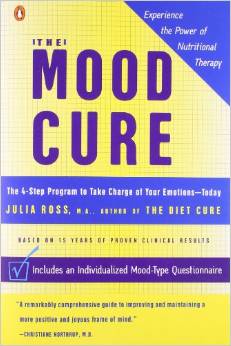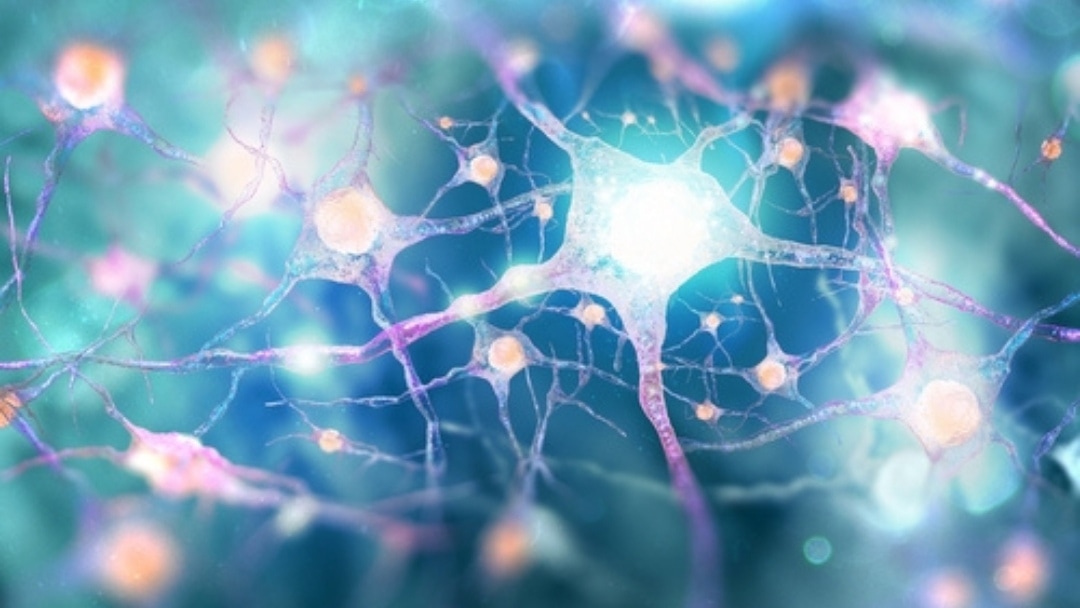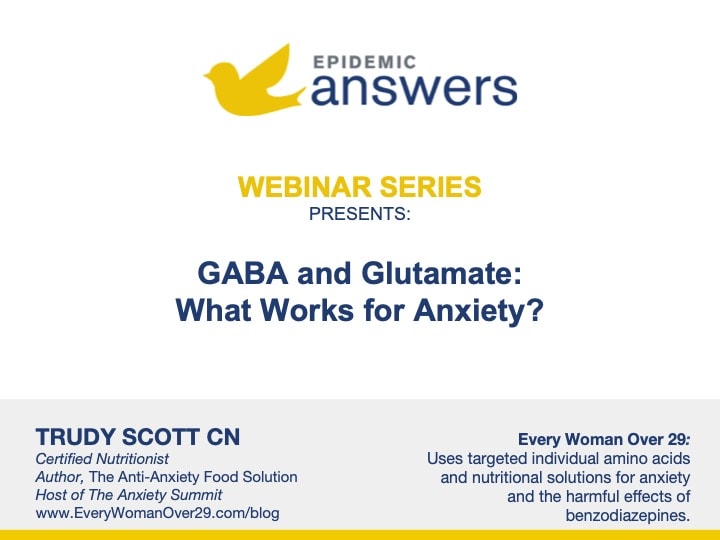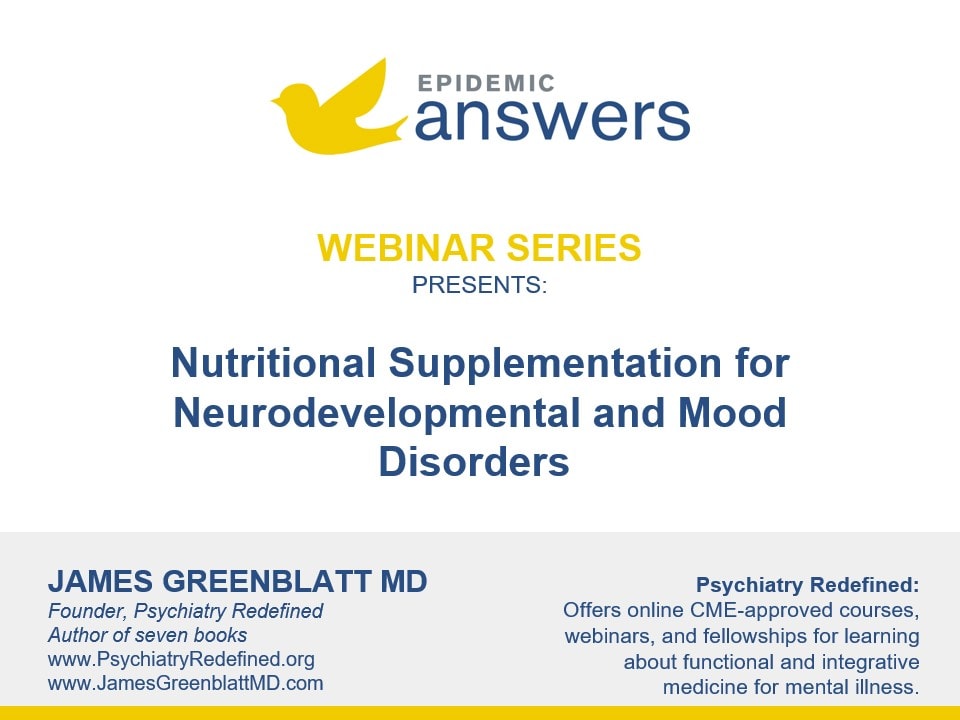After working with people who couldn’t recover from addiction with intensive psychotherapy and spiritual-support programs, Ms. Ross suspected that poor nutrition was playing a role. She discovered that “clients who did not make the nutritional changes — despite new communication skills, exercise, long vacations, and moderate work hours — did not do nearly as well.” However, she found that it took about 10 weeks of nutritional changes for the results to really stick.
Questionnaires
Ms. Ross’ four-part questionnaire helps to identify which amino acid(s) a person might be low in. This is extremely helpful because it’s a way to figure out which deficiencies are playing a role in a person’s mood disorders or addictions without the use of expensive testing, although that may be warranted later to confirm suspicions.
Targeted Amino Acids
Ms. Ross discovered that clients who need to take amino acid supplements should do so for three to twelve months for their mood biochemistry to be repaired, although these clients need to continue eating the whole-foods diet she recommends. What’s really helpful in this book is that dosage and timing of these amino acids is given in detail.
She found that there are four major amino acids known as neurotransmitters, of which some or all may need to be supplemented, depending on a person’s needs after completing her questionnaires. They are:
Serotonin
Most people know about this “happy” neurotransmitter because so many people these days are on SSRIs, Selective Serotonin Reuptake Inhibitors, such as Zoloft, Prozac, Paxil, Lexapro and Celexa. Ms. Ross details why serotonin may be low:
- Lack of pro-serotonin foods
- Stimulants like caffeine and diet pills
- Aspartame (NutraSweet)
- Stress
- Genetic susceptibility
- Lack of bright sunlight, as is seen in Seasonal Affective Disorder (SAD)
- Lack of exercise
Because this book was published in 2002 before the explosion of research about the microbiome and its effect on our health (including mental health), it doesn’t mention how gut dysbiosis plays a critical role in serotonin deficieny. Serotonin is made in the gastrointestinal tract, and if there are more harmul than helpful microbiota, the amino acid tryptophan — which mainly comes from animal protein — isn’t converted well to serotonin (which is ultimately converted to melotonin). The dietary recommendations that she makes (see below), however, go a long way to correcting gut dysbiosis.
Catecholamines
These neurotransmitters are stimulating, and a deficiency of any of them could lead to what Ms. Ross calls “the blahs”. Dopamine, epineprine and norepinephrine are catecholamines. They are created by the adrenal glands, so if a person has adrenal fatigue or dysfunction (who doesn’t these days?), then he or she would likely be deficient in these neurotransmitters. Children with autism, ADHD, Sensory Processing Disorder or those with chronic illnesses often have low levels of catecholamines.
GABA
GABA is the antithesis to glutamate, the excitatory neurotransmitter that, in excess, can sometimes be solely responsible for the symptoms of autism, ADHD, Sensory Processing Disorder and anxiety. GABA is calming, and it’s often called “nature’s Valium”. A deficiency of GABA can cause symptoms such as oversensitivity to lights and sounds, an inability to relax and a tendency to be easily upset.
Endorphins
Most people are familiar with these neurotransmitters because of the tremendous good feeling, known as the “runner’s high”, that comes after high-intensity exercise. Endorphins are natural painkillers, so a deficiency of them can cause a person to become too physically or emotionally sensitive. The craving of pleasureable treats such as comfort foods can be an indicator of low endorphin levels.
Mood-Boosting Diet Suggestions
Ms. Ross followed up her work in this book with The Diet Cure: The 8-Step Program to Rebalance Your Body Chemistry and End Food Cravings, Weight Gain, and Mood Swings, which was published in 2012. The basics are the same, though: Take out the bad food and add in the good food. Certain foods are what she calls “mood monsters”. They are sweets, white-flour foods, gluten, vegetable oils (especially hydrogenated ones) and soy. Other foods (dairy, chocolate, peanuts, eggs, corn and nightshades) are also likely culprits because sensitivities or intolerances to them can cause an IgG immune response, which can disrupt the production of neurotransmitters in the gut. The best way to find out if any of these foods is causing a mental and/or physical health problem is to implement an elimination diet.
Removing problematic foods is one step; the other is to add in health-promoting foods. Her top choices are protein (which is where amino acids come from); quality fats, such as omega-3 fatty acids and saturated fats from animals and coconuts; vegetables and legumes. As she writes, “Cholesterol (which only comes from animal fats) is one of the most valuable nutrients there is for mood, particularly for stress coping, since it is the substance that we use to make our stress-coping hormones and our mood-regulating sex hormones. If you’ve been avoiding it stringently, you may have innocently compounded your mood problems.” The brain is mostly made of fat, and cholesterol is essential for its proper function. Children with neurodevelopmental disorders such as autism often have a cholesterol deficiency that contributes to their symptoms.
The gist of what she recommends is a whole-foods diet. Thankfully, more people are aware these days of what that means, but they can often be mislead by food labels. (Hint: If it has a label, it’s not a whole food!) Beware of packaging claims that say “made with whole grains”, etc. Sure, maybe whole grains were used to begin with, but the end result is a processed food with a label. Recipes, menus and meal plans are given to help you get started on this journey if you’re not familiar with any of it. The book also provides a list of potential nutritional supplements that can help with different kinds of mood, health or addiction issues. Specialized pracitioners such as functional-medicine doctors and naturopaths can determine which specific supplements can help for an individual.
Mood-Cure Tool Kits
To further refine factors that may be affecting mood, testing and rebalancing of different issues that can also be affecting mood such as thyroid disorders, adrenal dysfunction, sex hormone imbalances and food cravings, she discusses ways to test these issues and suggestions for how to address them.
Final Thoughts
This book has held up remarkably well in the almost two decades since the time it was published and the time this blog post was written. It continues to be a well-used reference book for many in the field of nutritional therapy, and it’s heartening to see that so much peer-reviewed medical research backs up the points made in the book.
Still Looking for Answers?
Visit the Epidemic Answers Practitioner Directory to find a practitioner near you.
Join us inside our online membership community for parents, Healing Together, where you’ll find even more healing resources, expert guidance, and a community to support you every step of your child’s healing journey.
Sources & References
Atladottir, H.O., et al. The increasing prevalence of reported diagnoses of childhood psychiatric disorders: a descriptive multinational comparison. Eur Child Adolesc Psychiatry. 2015;24(2):173-83.
Berk, M., et al. So depression is an inflammatory disease, but where does the inflammation come from? BMC Med. 2013;11:200.
Berry, E.A., et al. National estimates of the inpatient burden of pediatric bipolar disorder in the United States. J Ment Health Policy Econ. 2011;14(3):115-23.
Bayer, J.K., et al. The Cool Little Kids randomised controlled trial: population-level early prevention for anxiety disorders. BMC Public Health. 2011;11:11.
Bitsko, R.H., et al. Epidemiology and Impact of Health Care Provider-Diagnosed Anxiety and Depression Among US Children. J Dev Behav Pediatr. 2018 Apr 24.
Bonnot, O., et al. Children and adolescents with severe mental illness need vitamin D supplementation regardless of disease or treatment. J Child Adolesc Psychopharmacol. 2011;21(2):157-61.
Bravo, J.A., et al. Ingestion of Lactobacillus strain regulates emotional behavior and central GABA receptor expression in a mouse via the vagus nerve. Proc Natl Acad Sci U S A. 2011 Sep 20;108(38):16050-5.
Camilleri, M. Serotonin in the gastrointestinal tract. Curr Opin Endrocrinol Diabetes Obes. 2009 Feb;16(1):53-9.
Ceylan, M.F., et al. Lipid peroxidation markers in children with anxiety disorders and their diagnostic implications. Redox Rep. 2014;19(2):92-6.
Cohen-Cline, H., et al. Access to green space, physical activity and mental health: a twin study. J Epidemiol Community Health. 2015 Jun;69(6):523-9.
Costello, E.J., et al. 10-year research update review: the epidemiology of child and adolescent psychiatric disorders: II. Developmental epidemiology. J Am Acad Child Adolesc Psychiatry. 2006 Jan;45(1):8–25.
Darling, A.L., et al. Association between maternal vitamin D status in pregnancy and neurodevelopmental outcomes in childhood: results from the Avon Longitudinal Study of Parents and Children (ALSPAC). Br J Nutr. 2017 Jun;117(12):1682-1692.
Dusetzina, S.B., et al. Treatment use and costs among privately insured youths with diagnoses of bipolar disorder. Psychiatr Serv. 2012;63(10):1019-25.
Guney, E., et al. Oxidative stress in children and adolescents with anxiety disorders. J Affect Disord. 2014;156:62-6.
Karakula, H., et al. [Does diet affect our mood? The significance of folic acid and homocysteine]. Pol Merkur Lekarski. 2009;26(152):136-41.
Kawatani, M., et al. Evaluation of oxidative stress status in children with pervasive developmental disorder and attention deficit hyperactivity disorder using urinaryspecific biomarkers. Redox Rep. 2011;16(1):45-6.
Kelly, J.R., et al. Breaking down the barriers: the gut microbiome, intestinal permeability and stress-related psychiatric disorders. Front Cell Neurosci. 2015 Oct 14;9:392.
Leuchter, A.F., et al. Intermediate phenotypes and biomarkers of treatment outcome in major depressive disorder. Dialogues Clin Neurosci. 2014;16(4):525-37.
Lionetti, E., et al. Gluten Psychosis: Confirmation of a New Clinical Entity. Nutrients. 2015 Jul 8;7(7):5532-9.
Memon, A., et al. Association between naturally occurring lithium in drinking water and suicide rates: systematic review and meta-analysis of ecological studies. British Journal of Psychiatry. 2020 Dec; 217(6): 667-678.
Mitchell, E.S., et al. B vitamin polymorphisms and behavior: evidence of associations with neurodevelopment, depression, schizophrenia,bipolar disorder and cognitive decline. Neurosci Biobehav Rev. 2014;47:307-20.
Ostiguy, C.S., et al. Sensitivity to stress among the offspring of parents with bipolar disorder: a study of daytime cortisol levels. Psychol Med. 2011;41(11):2447-57.
Rollins, B., et al. Mitochondrial variants in schizophrenia, bipolar disorder, and major depressive disorder. PLoS One. 2009;4(3):e4913.
Rook, G.A., et al. Microbiota, immunoregulatory old friends and psychiatric disorders. Adv Exp Med Biol. 2014;817:319-56.
Spartz, E.J., et al. Course of Neuropsychiatric Symptoms After Introduction and Removal of Nonsteroidal Anti-Inflammatory Drugs: A Pediatric Observational Study. J Child Adolesc Psychopharmacol. 2017 Jul 11.
Thompson, L., et al. What have birth cohort studies asked about genetic, pre- and perinatal exposures and child and adolescent onset mental health outcomes? A systematic review. Eur Child Adolesc Psychiatry. 2010;19(1):1-15.
Toufexis, M.D., et al. Disordered eating and food restrictions in children with PANDAS/PANS. J Child Adolesc Psychopharmacol. 2015 Feb;25(1):48-56.
Van Meter, A.R., et al. What goes up must come down: the burden of bipolar depression in youth. J Affect Disord. 2013;150(3):1048-54.
Warner, B.B. The contribution of the gut microbiome to neurodevelopment and neuropsychiatric disorders. Pediatr Res. 2019 Jan;85(2):216-224.
Winter, C., et al. Dopamine and serotonin levels following prenatal viral infection in mouse—implications for psychiatric disorders such as schizophrenia and autism. European Neuropsychopharmacology. 2008 Oct;18(10):712-6.
Yang, B., et al. Effects of regulating intestinal micobiota on anxiety symptoms: A systematic review. General Psychiatry. 2019; 32: e100056.
Resources
Bock, Kenneth. Brain Inflamed: Uncovering the Hidden Causes of Anxiety, Depression, and Other Mood Disorders in Adolescents and Teens. 2021, Harper Wave.
Brogan, Kelly. A Mind of Your Own: The Truth About Depression and How Women Can Heal Their Bodies to Reclaim Their Lives. 2016, Harper Thorsons.
Greenblatt, James M. Answers to Anorexia: A Breakthrough Nutritional Treatment That is Saving Lives. 2010, Sunset River Press.
Greenblatt, James M. Integrative Medicine for Binge Eating: A Comprehensive Guide to the New Hope Model for the Elimination of Binge Eating and Food Cravings. 2019, FriesenPress.
Greenblatt, James M. Integrative Medicine for Depression: A Breakthrough Treatment Plan that Eliminates Depression Naturally. 2019, FriesenPress.
Greenblatt, James M. (ed.) and Brogan, Kelly (ed). Integrative Therapies for Depression: Redefining Models for Assessment, Treatment and Prevention. 2015, CRC Press.
Greenblatt, James M. and Grossman, Kayla. Nutritional Lithium: A Cinderella Story: The Untold Tale of a Mineral That Transforms Lives and Heals the Brain. 2016, CreateSpace Independent Publishing Platform.
Lambert, Beth, et al. Brain Under Attack: A Resource for Parents and Caregivers of Children with PANS, PANDAS, and Autoimmune Encephalitis. 2018, Answers Publications.
James Greenblatt MD Webinars for the Great Plains Laboratories
Adolescent Self-Injury And Suicide Prevention
Amino Acid Precursors In The Treatment Of Depression And Anxiety
Case Studies In Integrative Mental Health
Dietary Influences On Behavior Problems In Children
Exploring The Role Of Folate And MTHFR Testing In Psychiatry – The Hype And The Hope
How Gut Bacteria Affects Mood, Anxiety, And Weight- Research And Clinical Implications
Inflammation And Neuropsychiatric Illness: Treatment And Testing Protocols
An Integrative Approach To The Treatment Of Anorexia Nervosa
Integrative Approach To Treating Fatigue And Insomnia
Integrative Medicine For Appetite Control
Integrative Medicine For Eating Disorders
Integrative Medicine For Mood And Anxiety Disorders
Integrative Medicine For OCD And Anxiety Disorders
Integrative Medicine For Psychosis And Schizophrenia
Integrative Medicine For The Treatment Of Eating Disorders
Integrative Medicine For The Treatment Of Mood Disorders
Integrative Medicine Is Personalized Medicine
Integrative Therapies For Mental Illness – Case Studies
Integrative Therapies For The Treatment Of ADHD
Integrative Therapies For Obsessive Compulsive Disorder
Integrative Treatments For Behavioral Problems In Children
Introduction To Integrative Medicine For Mental Health
Low Dose Lithium For The Treatment Of Mood, Behavioral, And Cognitive Disorders
Neuroactive Peptides From Common Foods Contribute To Psychiatric Disorders
Nutritional Risk Factors In Predicting Suicide Risk
Nutritional Support For Antidepressant Withdrawal
Orthomolecular Approaches In The Treatment Of Pediatric And Adult Obsessive Compulsive Disorder
The Role Of Heavy Metals In Psychiatric Disorders
The Role Of Phytochemicals In The Treatment Of Depression
Understanding The Role Of Amino Acids In The Treatment Of Mental Health
Utilizing Nutritional Strategies With The Use Of Antidepressants




